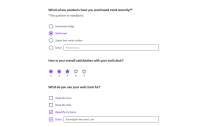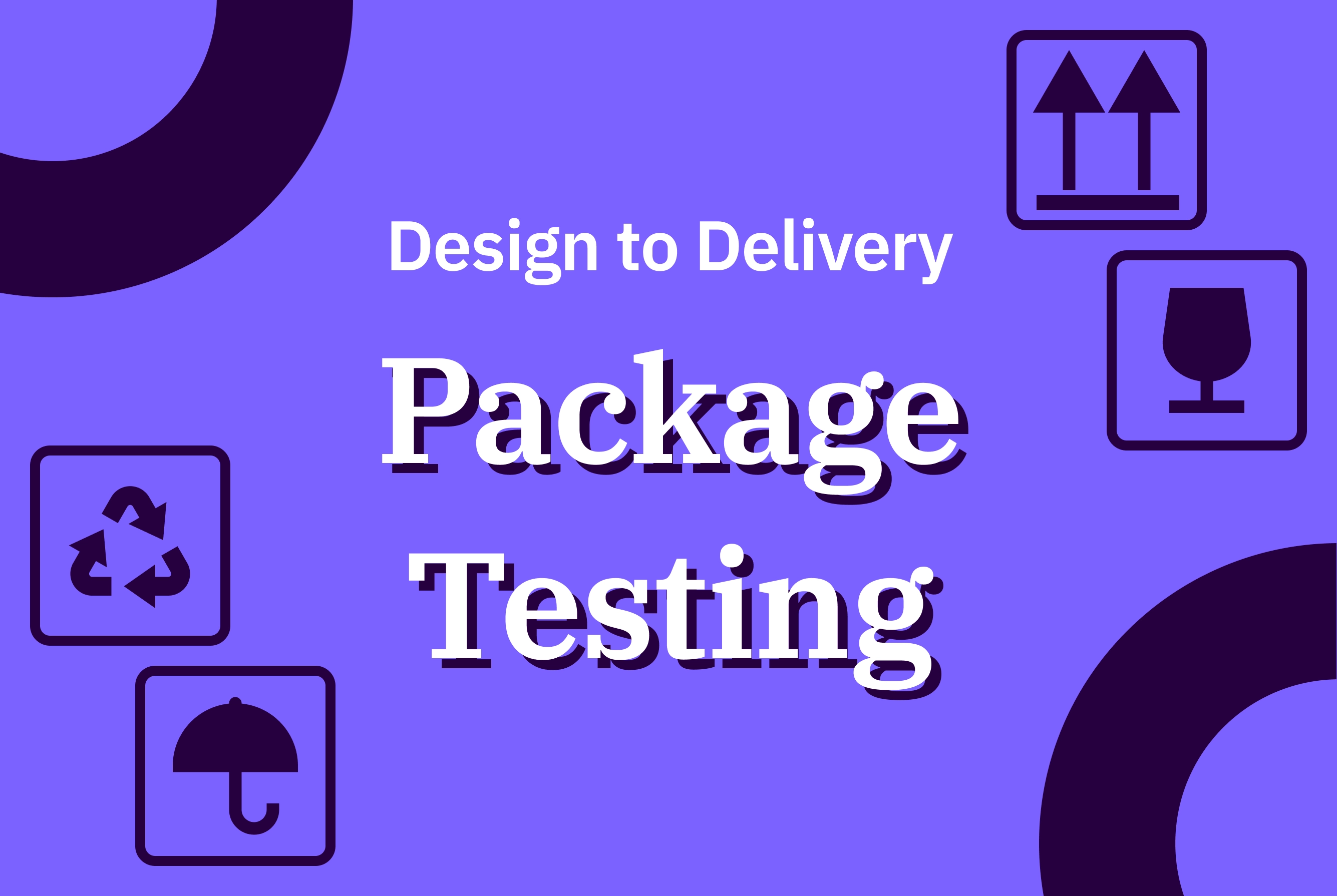Imagine you’re unboxing a long-awaited product that you've ordered online—a high-end gadget or a delicate piece of decor. You’ve spent time anticipating this purchase, and as you finally tear open the box, the last thing you want is disappointment. Perhaps the packaging feels flimsy, or maybe it’s so difficult to open that you’re already frustrated before even reaching the product. Or, worst-case scenario, the product arrives damaged. All these elements of packaging impact your perception of the brand, from quality to care for the customer.
Packaging is more than making a product look pretty - it’s a functional component that’s important to brand identity, user experience, and product integrity. But how do you know your packing is hitting the right mark? Package testing using online survey tools is essential to gather customer feedback, providing valuable insights that help to guide decision-making, ensuring products arrive safely and appeal to customers in the right way.
Let’s find out more about how you can leverage surveys to streamline package testing with tools like LimeSurvey.
What is Package Testing?
This is the process of evaluating packaging to make sure it meets the requirements for product safety, stability, functionality, and customer satisfaction. It’s essentially a mix of laboratory testing and feedback collection to assess the durability, design, and usability of the packaging. All industries can benefit from package testing, but it’s particularly integral for industries that rely on shipping and distribution, such as food, pharmaceuticals, and e-commerce.
Using Package Testing in Product Development
When done right, package testing can help businesses save money. But perhaps more important in the long term, it ensures you can maintain brand integrity and continue to improve customer satisfaction. Packaging that fails to protect products or align with brand aesthetics can lead to negative customer feedback, costly returns, and a damaged reputation. By testing, brands can catch these potential issues early in development, saving everyone a headache!
By incorporating package testing into product development, companies can identify areas for improvement before launch and refine designs based on customer feedback. This means brands can make data-driven decisions to put their best foot forward.
Types and Methods of Package Testing
Before we get into how online survey tools like LimeSurvey can help, it’s important to understand the different ways you can package test - and for what reasons.
Types can include:
- Environmental Testing: Evaluates the packaging’s resilience to environmental factors like temperature, humidity, and light exposure, which can impact product freshness and longevity.
- Physical Testing: Checks the durability of the packaging to withstand handling, impacts, and stacking.
- Chemical Testing: Mostly used for food and pharmaceuticals, this type of product testing ensures packaging materials don’t react poorly with the contents, which could alter the product or worse - harm consumers.
- User Experience Testing: This is where brands focus on consumer interaction with the packaging - looking at things like convenience and overall appeal. This involves surveys and feedback from end-users to understand how well the packaging meets their needs and expectations.
- Regulatory Compliance Testing: Ensures the packaging meets relevant legal standards and regulations, which can vary by industry and country.
Leveraging Surveys for Effective Package Testing
Companies can identify areas for improvement before launch and refine designs based on customer feedback by incorporating package testing into product development. This means brands can make data-driven decisions to put their best foot forward.
Collecting customer feedback through online surveys allows companies to gauge consumer perceptions of their packaging - and the feedback you get can influence purchasing decisions. By embedding surveys within the package testing process, companies can capture detailed feedback that informs adjustments and enhances product appeal.
Designing Effective Package Testing Surveys
To ensure survey effectiveness, it’s important to focus on questions that gather both quantitative and qualitative feedback:
- General Impression: “How would you rate the overall design of the packaging?”
- Usability: “Did you find the packaging easy to open?”
- Durability Perception: “Do you feel the product was adequately protected?”
- Environmental Impact: “Is the packaging sustainable or recyclable, and does that influence your purchasing decision?”
- Aesthetic Appeal: “How well does the packaging reflect the brand’s identity?”
Using LimeSurvey, you can design surveys that allow for flexibility in question types, from multiple-choice and Likert scales to open-ended responses. This variety lets you capture detailed responses that go beyond basic ratings, helping to uncover nuanced insights about consumer needs and preferences.
Package testing isn’t without its challenges - namely high costs, time constraints and consumer bias. However, by designing the appropriate online surveys, you can easily navigate these potential challenges. Online surveys are low cost, allow brands to simultaneously gather user insights and make packaging adjustments on a rolling basis, and provide an avenue to ask pointed questions - ensuring you get clearer, more useful feedback that balances style and substance.
Best Practices for Successful Package Testing
- Get stakeholders on board early: Involve packaging engineers, marketing teams, and consumer insights specialists from the beginning to create a balanced, well-rounded testing strategy.
- Use a multi-method approach: Package testing works best when it doesn’t rely solely on one form of testing. Using a combination of physical tests and user surveys will give you the most comprehensive assessment.
- Incorporate user feedback iteratively: survey insights can be used at different stages of package development to make adjustments based on consumer needs.
- Think about compliance and sustainability: Make sure you’ve considered all market-specific regulatory and environmental considerations early in the process to avoid costly redesigns.
Analyze survey data effectively: Use LimeSurvey’s analytics features to draw actionable insights from survey responses, highlighting areas for immediate improvement and tracking trends over time.
Package testing is vital for product protection, regulatory compliance, and customer satisfaction. Leveraging online survey tools like LimeSurvey can help you capture real customer feedback - and by involving them in the package testing process through surveys, you can make well-informed decisions, while also ensuring compliance, to deliver packaging that truly resonates with your target customers.
Explore how LimeSurvey can support your journey by providing a user-friendly, customizable platform for gathering invaluable insights.





